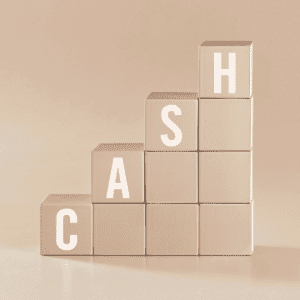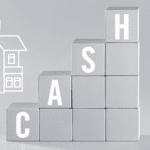By Quinn Townsend and Josiah Davidson
 The state of Alaska published the Alaska K–12 Education COVID-19 Federal Relief Funding Dashboard to make transparent how much federal COVID-19 relief funding school districts received and how the funds are being spent. In total, Alaska public school districts have been awarded over $538 million and as of June 26, 2023, they have spent 64% of funds received. Almost $194 million – 36% – of federal COVID-19 relief funds are sitting in the coffers of these districts. This special funding is above and beyond districts’ regularly allocated state and federal funds.
The state of Alaska published the Alaska K–12 Education COVID-19 Federal Relief Funding Dashboard to make transparent how much federal COVID-19 relief funding school districts received and how the funds are being spent. In total, Alaska public school districts have been awarded over $538 million and as of June 26, 2023, they have spent 64% of funds received. Almost $194 million – 36% – of federal COVID-19 relief funds are sitting in the coffers of these districts. This special funding is above and beyond districts’ regularly allocated state and federal funds.
This state dashboard shows the total received by each district and lists each district’s expenditures of these funds. Table 1 shows each school district, how much it received in federal funds beyond normal funding, how much each district has spent to date, the balance remaining, and how much each district received per student. As examples, the districts that have the largest balance still remaining: Pelican City School District has 86% remaining; Aleutian Region School District has 75% remaining; and Hydaburg City School District has 71% remaining.
Table 1.
| School District | Received | Spent as of 6/26/2023 | Balance | Percent unspent | Award per Student |
| Alaska Gateway School District | $2,903,602 | $1,941,386 | $962,216 | 33% | $7,152 |
| Aleutian Region School District | $101,917 | $25,013 | $76,904 | 75% | $4,247 |
| Aleutians East Borough School District | $563,146 | $375,976 | $187,170 | 33% | $2,721 |
| Anchorage School District | $184,134,456 | $109,170,137 | $74,964,319 | 41% | $4,274 |
| Annette Island School District | $2,261,880 | $2,030,923 | $230,957 | 10% | $7,025 |
| Bering Strait School District | $19,286,356 | $13,606,162 | $5,680,194 | 29% | $10,248 |
| Bristol Bay Borough School District | $327,644 | $252,413 | $75,231 | 23% | $2,900 |
| Chatham School District | $1,247,675 | $1,126,016 | $121,659 | 10% | $8,912 |
| Chugach School District | $639,997 | $415,370 | $224,627 | 35% | $1,002 |
| Copper River School District | $1,736,545 | $1,483,595 | $252,950 | 15% | $3,974 |
| Cordova City School District | $985,807 | $895,374 | $90,433 | 9% | $2,987 |
| Craig City School District | $1,151,339 | $1,074,885 | $76,454 | 7% | $1,613 |
| Delta-Greely School District | $2,871,437 | $2,034,190 | $837,247 | 29% | $3,187 |
| Denali Borough School District | $536,445 | $506,374 | $30,071 | 6% | $514 |
| Dillingham City School District | $1,736,565 | $1,435,016 | $301,549 | 17% | $4,067 |
| Fairbanks North Star Borough School District | $36,387,427 | $25,475,336 | $10,912,091 | 30% | $2,947 |
| Galena City School District | $1,298,958 | $833,250 | $465,708 | 36% | $171 |
| Haines Borough School District | $890,740 | $743,506 | $147,234 | 17% | $3,549 |
| Hoonah City School District | $1,191,971 | $567,646 | $624,325 | 52% | $9,536 |
| Hydaburg City School District | $722,450 | $209,872 | $512,578 | 71% | $5,473 |
| Iditarod Area School District | $1,937,477 | $1,509,114 | $428,363 | 22% | $6,704 |
| Juneau Borough School District | $9,848,798 | $7,348,580 | $2,500,218 | 25% | $2,253 |
| Kake City School District | $630,036 | $393,377 | $236,659 | 38% | $6,117 |
| Kashunamiut School District | $4,922,576 | $2,454,775 | $2,467,801 | 50% | $15,054 |
| Kenai Peninsula Borough School District | $33,308,581 | $22,134,346 | $11,174,235 | 34% | $3,921 |
| Ketchikan Gateway Borough School District | $7,819,993 | $7,793,189 | $26,804 | 0% | $3,615 |
| Klawock City School District | $789,963 | $394,300 | $395,663 | 50% | $6,583 |
| Kodiak Island Borough School District | $5,883,346 | $4,515,336 | $1,368,010 | 23% | $2,621 |
| Kuspuk School District | $3,539,535 | $3,465,766 | $73,769 | 2% | $9,859 |
| Lake and Peninsula Borough School District | $1,905,063 | $1,015,874 | $889,189 | 47% | $5,428 |
| Lower Kuskokwim School District | $48,655,519 | $30,104,125 | $18,551,394 | 38% | $12,277 |
| Lower Yukon School District | $35,453,744 | $25,740,640 | $9,713,104 | 27% | $17,771 |
| Matanuska-Susitna Borough School District | $58,860,240 | $37,056,911 | $21,803,329 | 37% | $3,028 |
| Mount Edgecumbe | $5,551,842 | $3,619,345 | $1,932,497 | 35% | $13,776 |
| Nenana City School District | $655,229 | $451,429 | $203,800 | 31% | $383 |
| Nome Public Schools | $3,098,781 | $2,505,527 | $593,254 | 19% | $4,511 |
| North Slope Borough School District | $6,226,709 | $2,917,863 | $3,308,846 | 53% | $3,017 |
| Northwest Arctic Borough School District | $15,991,142 | $9,059,423 | $6,931,719 | 43% | $8,515 |
| Pelican City School District | $104,508 | $14,234 | $90,274 | 86% | $6,532 |
| Petersburg Borough School District | $1,284,075 | $1,015,356 | $268,719 | 21% | $2,972 |
| Pribilof School District | $263,370 | $221,459 | $41,911 | 16% | $4,318 |
| Saint Mary’s School District | $2,534,925 | $937,543 | $1,597,382 | 63% | $12,071 |
| Sitka School District | $2,661,675 | $2,249,988 | $411,687 | 15% | $2,242 |
| Skagway School District | $126,649 | $70,158 | $56,491 | 45% | $892 |
| Southeast Island School District | $875,264 | $523,206 | $352,058 | 40% | $5,647 |
| Southwest Region School District | $7,353,021 | $3,869,371 | $3,483,650 | 47% | $12,810 |
| Tanana City School District | $102,849 | $90,311 | $12,538 | 12% | $3,956 |
| Unalaska City School District | $334,066 | $332,825 | $1,241 | 0% | $941 |
| Valdez City School District | $1,497,113 | $1,344,562 | $152,551 | 10% | $2,054 |
| Wrangell Public School District | $1,021,525 | $561,944 | $459,581 | 45% | $3,899 |
| Yakutat School District | $111,938 | $75,342 | $36,596 | 33% | $1,131 |
| Yukon Flats School District | $2,563,570 | $1,134,847 | $1,428,723 | 56% | $11,979 |
| Yukon-Koyukuk School District | $3,178,958 | $1,293,307 | $1,885,651 | 59% | $927 |
| Yupiit School District | $8,515,430 | $3,355,543 | $5,159,887 | 61% | $19,136 |
| Total | $538,583,867 | $343,772,356 | $194,811,511 | 36% |
Because these federal grants are likely to be one-time-only, responsible spending entails one-time expenditures instead of ongoing expenditures such as salaries and benefits. Yet according to the district dashboards, many have chosen to use the funds for ongoing expenses, including salaries and benefits. While official guidelines suggest that spending the federal funds on hiring new school counselors or new staff is appropriate, extreme caution should be made as to the necessity of new positions in the long-term, as new positions require recurring costs.
As the DEED dashboards reveal, school districts are sitting on hundreds of millions of dollars yet are asking the state and their communities to dish out even more. And after these one-time funds expire, we can expect further claims of “drastic cuts.” Instead, parents, administrators, and policymakers should be asking: how can we spend these additional one-time funds in a manner that best serves our students? Better examples of how to spend federal COVID-19 relief funds – outside of immediate COVID-19 response such as PPE equipment and online learning facilitation – include activities to address learning loss, afterschool reading programs, and summer school programs. The success of Alaska’s students is paramount, and the COVID-19 federal relief funding should be used to serve them.
Note: The dashboards are updated by the state regularly. All numbers referenced in this post are up-to-date as of June 26, 2023.
Josiah Davidson is Alaska Policy Forum’s Summer 2023 Policy Intern. He is currently a student at Hillsdale College and is from Palmer.
